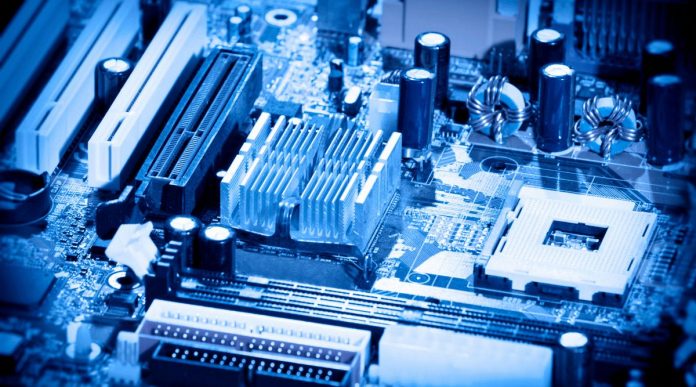Testing a motherboard can be tricky. The first thing you must do is unplug the power cord from the motherboard, and then remove any CPU or memory sticks that are installed in the motherboard slots. You will also need to disconnect any other devices connected to the motherboard, such as hard drives, optical drives, sound cards, etc. Then place the motherboard on top of an anti-static mat so that it’s away from anything else; do not place it back into its case just yet. Finally, begin running tests on the motherboard using your external device’s internal circuitry.
What is motherboard?
A motherboard is the central printed circuit board (PCB) in computers and other devices that houses the main components of the system, providing connectors for other boards and devices. The motherboard is also known as the mainboard, system board, or logic board. It is the largest and most important circuit board in a computer.
The motherboard contains the CPU, memory, graphics card slots, PCI/PCIe slots, USB ports, and other connectors and ports. It also has onboard graphics and sound. Testing a motherboard without a CPU can be done with a multimeter or by using bootable diagnostic tools.
How to know if your motherboard is faulty
If you’ve ever wondered whether or not your motherboard is faulty, here’s how you can test it without using a CPU. First, check the connections and make sure that everything is properly plugged in. Next, look for any visual signs of damage. If there are any burned out areas or broken components, then your motherboard is likely faulty. Once you’ve confirmed that the hardware is undamaged, it’s time to test the power supply. Connect a power supply tester to the motherboard and make sure that it’s receiving power. If the power supply tester doesn’t register any power, then your motherboard is definitely faulty and will need to be replaced. If the power supply does register power, then it’s time to move on to testing RAM. Remove all of the RAM sticks from their slots (including the ones on your graphics card) and try booting up your computer again. Make sure that no other devices (such as hard drives) are connected while doing this so that you’re able to isolate potential issues with RAM.
Connect power supply cables
- First, find the power supply unit (PSU) in your computer case and open its box.
- Inside, you’ll find several cables of different colors.
- The 24-pin motherboard power connector is usually white, black, or yellow and plugs into the socket on the motherboard labeled P1. It is also called an ATX power connector.
- Next, connect the 4/8-pin CPU power connector to the socket on the motherboard next to the CPU. This is also called an EPS power connector.
- You may also need to connect additional 6/8-pin PCIe power connectors to graphics cards installed in your system if your PSU doesn’t have enough connections for them all. 6. Connect the SATA power cable that came with your hard drive to any SATA port on the motherboard.
- If your hard drive has more than one SATA power cable, plug one end into the hard drive and then plug it into any available SATA port on the board; this will allow you to use both cables if necessary when attaching other devices such as optical drives later.
Connect hard disk drive
First, you’ll need to connect your hard disk drive (HDD) to the motherboard. Make sure that the power supply is unplugged before doing this. Next, find the SATA port on the motherboard and plug in the HDD. Once it’s plugged in, you can plug in the power supply and turn on the computer. The next step is to boot into your operating system. Once you’re in, open up the Disk Management tool. You should see your HDD listed here. If you don’t see it, make sure that it’s properly connected to the motherboard. If it is, then you may need to format it before you can use it. To do so, right-click on the disk and select Format. In the window that pops up, type in a volume label for your new partition (e.g., data) and choose FAT32 as the file system type. It’s important to note that this will erase all data currently stored on the HDD! After clicking OK, wait until formatting is complete. Now we need to create a new folder by clicking File -> New -> Folder from within Windows Explorer. Create one called data or something similar where all of your storage data will be kept once you’ve formatted it.
Power on
To test if your motherboard is working without a CPU, you’ll need to power on the motherboard. To do this, you’ll need to connect the power supply to the motherboard and turn it on. Once the power supply is connected, you should see the motherboard’s LEDs light up. If they don’t, then there’s a problem with the motherboard. A quick way to tell if it’s the motherboard or just a power issue is by testing your RAM modules one at a time.
Malfunctioning RAM modules can cause any number of symptoms that are very similar to those caused by faulty motherboards: BSODs, blue screens, crashes or random shutdowns.
What should I look for?
To test a motherboard without a CPU, you’ll need to disconnect the power supply, remove the CMOS battery, and then short the power switch pins on the motherboard. You can then reconnect the power supply and boot up your computer. If everything is working properly, you should see BIOS POST messages and be able to enter the BIOS setup utility. If you don’t see any POST messages or can’t enter the BIOS, then there’s a problem with your motherboard. Possible problems include an issue with the chipset, an issue with one of the memory modules, a defective CMOS battery, or other hardware issues.
Conclusion
To test a motherboard without a CPU, you’ll need to short the two power supply pins on the motherboard. This will simulate a power supply and allow you to test whether the motherboard is functioning properly. You can also use a multimeter to test the voltage on the power supply pins. If everything checks out, then your motherboard is most likely fine and you just need to buy a new CPU.

